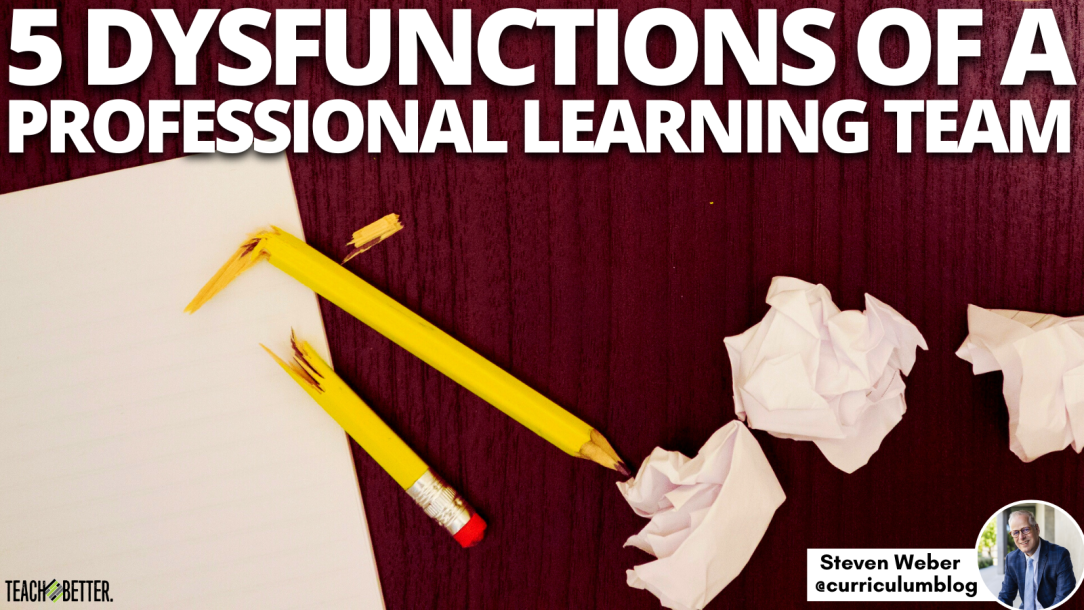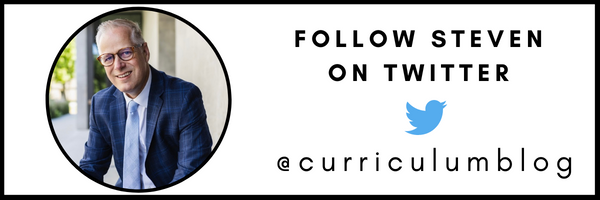TL;DR:
- All teams are potentially dysfunctional due to the fallibility of human beings, which can lead to frustration and fatigue among educators who collaborate and share resources.
- The five dysfunctions of a Professional Learning Team include curriculum clutter, fear of conflict, lack of trust, failure to communicate, and lack of a scoreboard.
- Overcoming these dysfunctions requires clarity in curriculum goals, embracing conflict for productive discussions, building trust among team members, effective communication, and implementing a scoreboard to measure progress towards goals.
All Teams Are Potentially Dysfunctional
“Like it or not, all teams are potentially dysfunctional. This is inevitable because they are made up of fallible, imperfect human beings” (Lencioni, 2002). As educators frequently share resources, develop unit plans, and collaborate, they may experience frustration, failure, and fatigue. Most teacher teams at the elementary level have a 45-minute planning period, and that time may be reduced if the teachers are responsible for taking students to their encore classes.
Unlike other professions, educators work directly with students between 8:00 am – 4:00 pm. This means that adult meetings take place before school, during a brief break, or after a full day of teaching students.
Therefore, it can be stressful to challenge a colleague after a full day of teaching students. Based on working with and observing hundreds of school teams, I have witnessed five dysfunctions of a Professional Learning Team.
When teams have clarity, embrace conflict, establish trust, communicate frequently, and monitor the scoreboard, they will be able to achieve their goals. Click To TweetDysfunction #1 – Curriculum Clutter
Curriculum clutter is the result of a lack of clarity. Clutter comes in the form of no curriculum, a disjointed curriculum, unexamined curriculum, an emphasis on programs over learning goals, or too many chefs in the kitchen. When learning teams do not understand the goals for each grade level or course, it can lead to frustration. Clutter has a negative impact on student understanding. If everything is important, then nothing is important.
In Toward a Coherent Curriculum: The 1995 ASCD Yearbook, Steller wrote, “The curriculum in numerous schools lacks clarity and, more important, coherence. Students move from teacher to teacher and subject to subject along a curriculum continuum that may or may not exhibit planned articulation” (Beane, 1995, p. v).
Curriculum clutter must be addressed by learning teams. Imagine a person who may be described as a hoarder. When you visit their home, two of the bedrooms are filled to the ceiling with furniture, antiques, and collectibles. There is no guest bedroom because it is filled with clutter. Schools can be filled with clutter and it results in a lack of learning targets or curriculum priorities.
Dysfunction #2 – Fear of Conflict
In the classic leadership book titled The Five Dysfunctions of a Team, Lencioni (2002) described how several teams view success in the absence of conflict. In theory, if a Professional Learning Team does not argue and the members of the team respect one another then it is thought to be a successful meeting. School teams need to have hard conversations about students who are not demonstrating measurable growth. Student attendance, student engagement, and the effectiveness of the taught curriculum should also bring out lively conversation and a sense of urgency. “The courage to address tough topics comes from a deep commitment. No deep commitment, no hard dialogue” (Muhammad & Hollie, 2012).
Some school teams maintain the status quo because they do not take time to disagree. Educators must focus on the unique needs of their schools and the students they serve. Teams that avoid conflict may end up collaborating on the wrong topics. Conflict does not need to result in hurt feelings or a team meltdown.
3 Reasons Teams Should Embrace Conflict
- Teams should have a sense of urgency about what matters most.
- Challenging an idea or strategy may lead educators to support more students.
- The purpose of a Professional Learning Team is to seek solutions, not sit in a meeting and pat each other on the back.
Dysfunction #3 – Lack of Trust
Without a certain comfort level among team members, a foundation of trust is impossible. According to Lencioni (2002), a lack of trust “occurs when team members are reluctant to be vulnerable with one another and are unwilling to admit their mistakes, weaknesses, or need for help.”
A Professional Learning Team That Operates With Trust Will Ask:
- Which students seem to struggle with the key concepts and skills identified by the team?
- Which skills or concepts do I struggle to teach?
- What is the level of trust on our team?
- Are there areas of the curriculum map that could be revised to support teaching and learning?
- Based on the first quarter data, 25% of our students need additional instruction and academic support with the key skills outlined by our team. What are the next steps we need to take as a team?
Dysfunction #4 – Failure to Communicate
In the movie Cool Hand Luke (1967), Captain said, “What we’ve got here is failure to communicate.” Dysfunctional Professional Learning Teams may have good intentions, but a common barrier is a failure to communicate. There may be a weekly meeting time, but the communication could be about the wrong topics. Some school teams become frustrated with their teammates and they may refuse to meet for three or four weeks. Communication is critically important and teams who do not communicate effectively may drift from the curriculum priorities and the topics that are most important. It is worth noting that curriculum clutter, fear of conflict, and lack of trust can lead to the failure to communicate.
The following sentence stems can help a team that is struggling to communicate.
- How might we __________________?
- In order for students to succeed, we must ____________________.
- The academic interventions our students need include ____________________.
- One instructional strategy we will commit to this week is _____________________.
- Based on formative assessment data, we should _________________________.
- Because we believe __________________, we are committed to ______________.
Dysfunction #5 – Lack of a Scoreboard
Professional Learning Teams may embrace the idea of school improvement, but the absence of a scoreboard makes it difficult to know if the efforts of each student and staff member are helping us approach or exceed the goal. Reflect on the need for a scoreboard. Identify what you are aiming for and how your team will measure success. A scoreboard allows the team to know when they are ahead, behind, and when the team needs to call a timeout. High-performing teams embrace data which helps them understand if their programs and collective efforts are helping them reach their goals.
When teachers co-plan how to measure student understanding it can lead to a deeper understanding of key skills and instructional strategies. Professional Learning Teams can develop common formative assessments, rubrics, writing prompts, or project-based learning to measure student understanding. Wendy’s aired a classic commercial (1984) where the main character repeatedly asked, “Where’s the Beef?” Simply teaching the curriculum is much different than asking, “Where’s the Beef?” What evidence will students show to demonstrate their understanding? When Professional Learning teams have a scoreboard, they will be able to make adjustments to support each learner.
[scroll down to keep reading]Overcoming The Dysfunctional Team
Professional Learning Teams are similar to families. At different points throughout the school year, at least one member of the team may have an off day or may not feel like contributing during the meeting. A challenging situation and a crucial conversation could lead to hurt feelings. Teams must learn to bring out the strengths in each team member. Team norms are a starting point, but teams must address the key issues that lead to student growth.
When teams have clarity, embrace conflict, establish trust, communicate frequently, and monitor the scoreboard, they will be able to achieve their goals. Professional Learning Teams should meet to determine whether one or more of the 5 Dysfunctions of a Team is interfering with the team’s ability to support teaching and learning. High-achieving teams are not perfect; they have identified ways to overcome the dysfunctional behavior that disrupts the work of a team.
References
Bean, J. (1995). What is a coherent curriculum? The 1995 ASCD Yearbook. ASCD.
Lencioni, P. M. (2002). The five dysfunctions of a team. Jossey-Bass.
Muhammad, A., & Hollie, S. (2012). The will to lead, the skill to teach: Transforming schools at every level. Solution Tree Press.
Rosenberg, S. (1967). Cool Hand Luke. Warner Bros. Seven Arts.
Wendy’s. (1984). Where’s the beef? Commercial aired on January 10, 1984. Retrieved from https://youtu.be/R6_eWWfNB54
About Steven Weber
Dr. Steven Weber is a curriculum leader. He has served on multiple state and national boards. His areas of research include curriculum design, multiplying leaders, professional learning, and school leadership.




